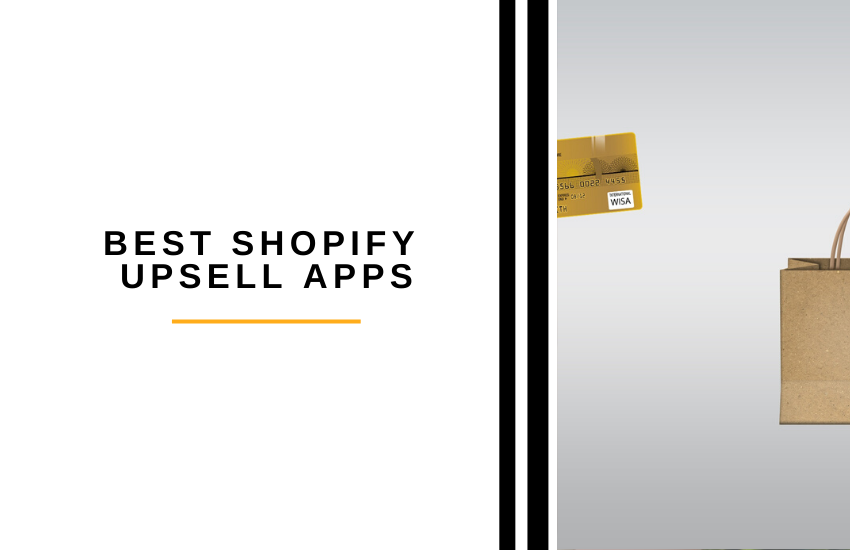Last Updated on May 29, 2024 by Ewen Finser
In our post, we will give you a rundown of the best Shopify upsell apps out there so you can choose the best for your store.
My TL;DR: If you just want my quick take, these are the upsell apps I’ve tried and recommend most…
- Bold Upsell: Best Overall
- Monster Upsells: Best Slide In Cards
- Voyager Upsell & Cross-Sells: Best Upsells + Cross Sells
- Candy Rack: Best Simple & Affordable
- Shop The Look
- Upsell X
- Personalizer
You’ve invested quite heavily in marketing automation and the whole lead generation process for your ecommerce store. It might have taken quite some time to build plus repeatedly analyze and test, but your war chest is almost complete.
You seemingly now have just the right tools to hunt down prospects and direct them to your online store.
Sadly, even after extensive marketing, 92% of the visitors attracted to your site are not ready to buy yet.
Now, that’s quite a challenge, to say the least. But nothing to be alarmed about. Because you also have the perfect response plan….
Enter the second, subsequent prospecting strategy – a solid lead nurturing framework.
The result? Well, for what it’s worth, let’s first acknowledge that standard businesses are only able to successfully convert 2-5% of their leads.
My point? As long as your average traction is anything above this, here’s a toast to you.
But only briefly. Because this is exactly where the principal problem begins.
You see… Oddly enough, even after they’ve proceeded to the shopping cart, a significant majority of would-be customers don’t actually go through with the whole checkout process.
Numerous recent studies by reputable analysts place the average cart abandonment rate between 60% and 80%. Barilliance, for instance, established 77.24% in 2016, which subsequently increased slightly to 78.65% in 2017.
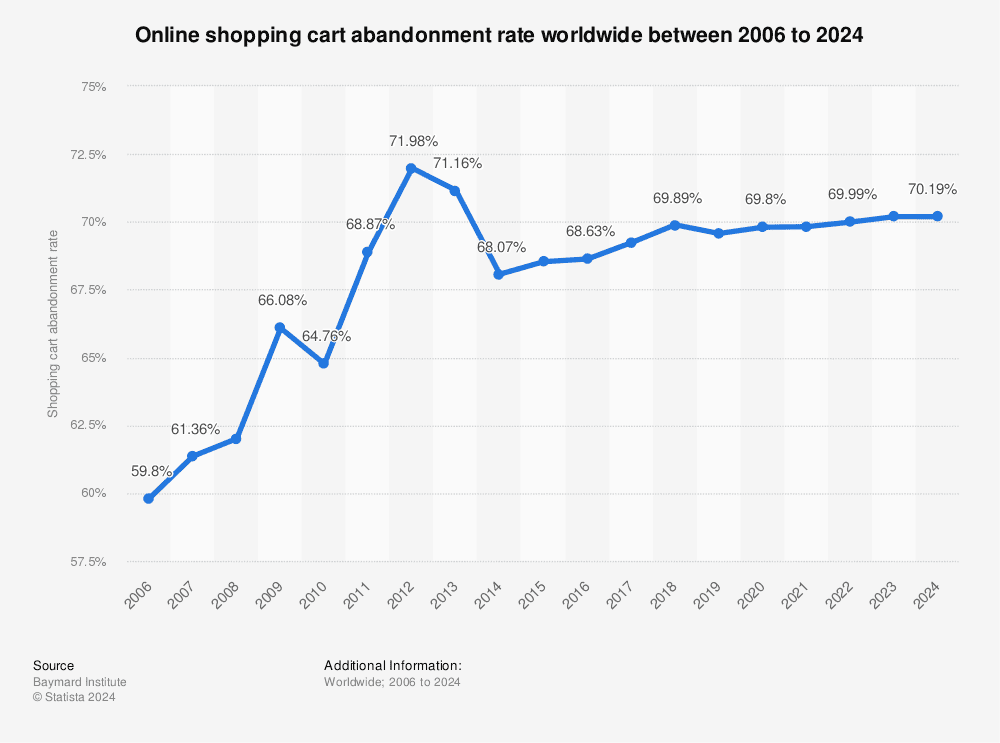
Find more statistics at Statista
Now, this is where you sit back, and the reality that ecommerce might not be a walk in the park starts dawning on you as a store owner.
Coming to think of it, these numbers we’ve seen over the entire lead journey cumulatively add up to the mother of all astonishing facts. That the average global conversion-to-sale rate in the recent past has been oscillating between 2.48% and 3.1%.
And in case you assumed that things were a little more promising for US-based businesses, you’d be surprised to learn that they are actually ranked among the poorest- recording a meager 2.46%.
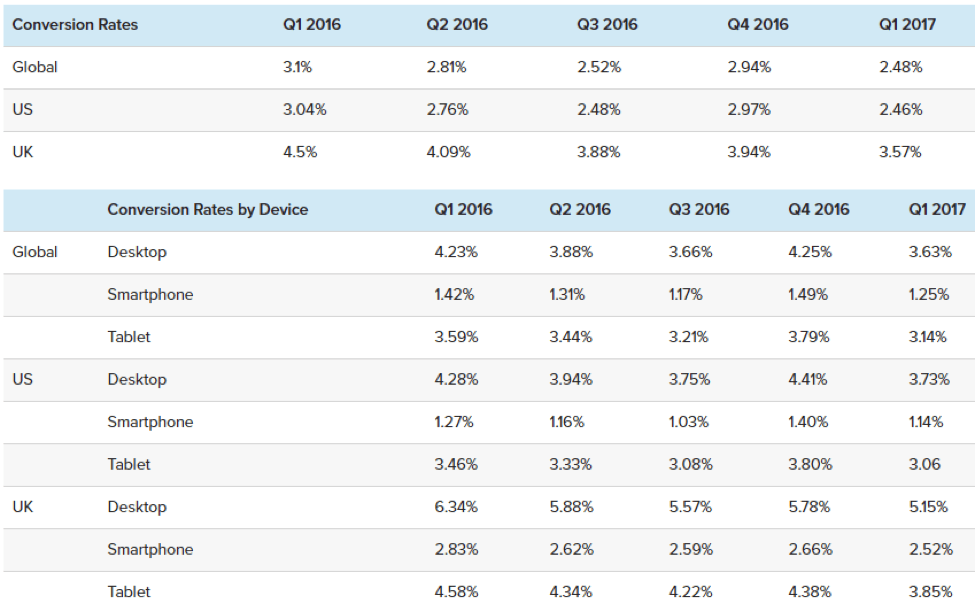
So, what does this mean for ecommerce stores?
Well, we could spend the next few minutes assessing all the possible fallout reasons for prospects. But you’ve probably heard about the principal ones. Plus the corresponding mitigation options across all types of business.
Hence, let’s agree to leave that can of worms for another day.
And instead, allow me to walk you through the opportunities you have with the converted 2.5%.
Tell me this…Have you heard about upselling?
Best Shopify Upsell Apps: What is Upselling?
Theoretically, it would make sense at this stage to direct the bulk of all your resources to track down lost warm prospects. And the rest to hunt and find more traffic to take through the conversion funnel.
Fair enough. But make no mistake. While you engage in that, don’t ignore the ones you’ve already converted into customers.
Because this is where the magic happens for all businesses.
Now stop right there! What’s the point?
Well, it turns out that a customer has a 27% chance of coming back to buy after the initial purchase of the recommended product. And in case they actually do, the stakes follow suit and move up higher. They now have a 45% chance of returning for a third purchase. These numbers are great for any Shopify store owner
And guess what? It doesn’t end there. By the time they make that third purchase, stakes will shift to 54%. And so forth.
Catch the drift? That it’s easier to convince someone who’s already bought from your store because they already trust the brand.
Consequently, businesses are spending 5 times less to keep current customers than acquiring new ones.
As a matter of fact, 61% of SMBs are now generating more than 50% of their revenue from repeat buyers.
Now, let that sink in for a minute.
The bottom line is that as long as you maintain good customer service, you’re bound to make more from the bird in hand. As opposed to the two in the bush.
That said, have you noticed a parameter that we’ve left out here?
Yes, you’re dead right- time. How long are you willing to sit by the door waiting for that return customer? That’s if they even come eventually?
You might suggest being patient and leaving the customer to take his time. And you’d be right. At least partly. Because what’s worse than a seemingly desperate business trying to hard sell?
But, here’s the interesting part. You could alternatively use bait to attract the customer and expedite the whole process.
Now, that’s upselling in a nutshell.
Technically, upselling is the concept of offering to sell a secondary product to a customer who’s already in the process of purchasing a primary product.
Pretty much like when your fast food attendant asks you if you want fries to accompany your burger or chicken.
If you’ve gone around the block and visited Amazon, you might have also noticed that tempting section at the bottom of the page. You know…the one where they state “Customer who bought this item also bought”. Well, that’s also upselling.
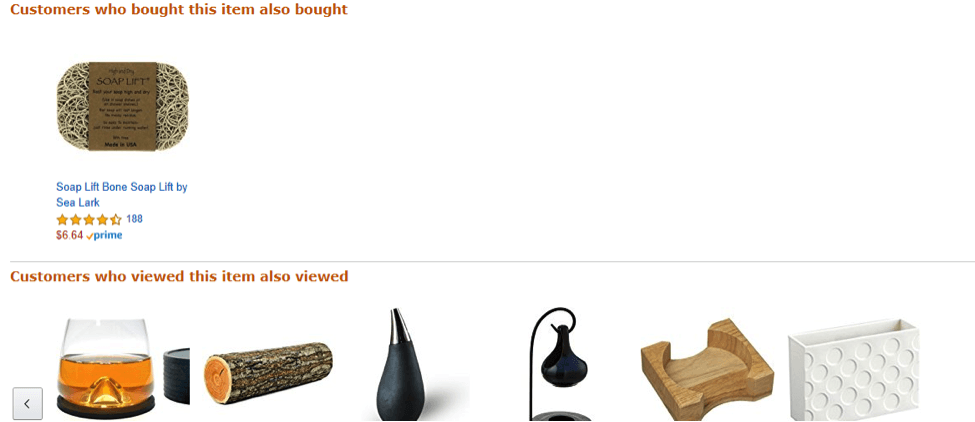
Source: Amazon
And you know what? This tactic actually works. As long as you approach it with finesse as opposed to dogged determination. There’s a reason they say that it’s an increasingly delicate balancing act.
But, worry not. Thankfully, there are numerous tools you could leverage to achieve this seamlessly. And Shopify being one of the most prominent ecommerce platforms, has quite a rich array for its users.
I tell you what though. I’m going to make things much simpler. By going straight the point, and reviewing the best Shopify upsell apps.
So let’s get down to business….
My Go-To Shopify Upsell Apps
1. Bold Upsell
With over 1000 reviews as of now, Product Upsell by Bold is certainly one of the most popular tools in this category. It prides itself as the “original upsell app for Shopify”, besides being named by the ecommerce platform as one of the top 5 applications for online stores.
And yes, it does exactly what its name says. It helps users set up unique upselling offers by combining relevancy and general customer preferences.
Another simple option is the “upgrade” offer:

To effectively trigger an extra sale, Bold Upsell uses a rather clever approach. You pretty much remind your customer of a supplementary product that they could be forgetting. And would possibly work well with their purchase.
Consider LED screens, for instance. Since they are often mounted on walls, it would make sense to try to upsell an accompanying set of wall mount support.
Fair enough, but what about products that are not that directly correlated? How do you establish an ideal add-on offer?
Well, if manually creating the upsell offers proves to be a challenge, you could alternatively leverage Bold Upsell’s machine learning engine. It collects relevant sales data, analyzes customer behaviors comprehensively then subsequently automates the whole upsell process accordingly.
2024 Update: They now ALSO offer Cross-Sell offers and subscription upgrades, in addition to the more traditional upsell functionality:

Sadly, there’s one small catch. It doesn’t come free. The free trial only runs for 14 days. Any usage beyond that requires you to pay on a monthly basis.
But thankfully, payment is principally based on the number of offer views. Anything below 1,000 views costs $24.99 per month. Then up to 5,000 views is charged $59.99 per month. Then $199.99 for 5001-50,000 views, and $399.99 for UNLIMITED views.

2. Monster Upsells
Monster Upsells is an incredibly unique upsell app for the Shopify ecosystem that focuses on a “slide in” checkout drawer for a different type of checkout experience. If your audience has become “blind” to your offers, this might be a good option to try.
A you can below, Monster has a unique progress bar for “free gifts” or special offers that can be unlocked with specific cart thresholds.

The main thing I like about Monster is that it’s not actually a pop-up and “slides in”, meaning that browsers with pop-up blockers enabled won’t be an issue AND customers may find it less aggressive (increasing time on site).
Some other nice features that stood out to me were one check upsells for warranties, shipping insurance and premium processing (fast shipping). Monster also features a fully customizable “buy more, save more” tiered upsell promotion functionality which I found myself experimenting with.
Monster Upsells uses a simple “per order” tiers pricing structure, starting at $12.99/month for up to 50 orders and escalating a further two break points:

3. Voyager Upsell & Cross-Sell
Voyager Upseel and Cross-Sell is quite simply optimized for two primary approaches. The first one is precisely what its name suggests- upselling through product bundling.
This is where its “smart” technology comes in handy. Through critical data analytics, it identifies the specific items various categories of customers are often interested in. Both similar and complementary products.
Well, of course, that forms the basis of the consequent product bundles. But there’s still something missing.
Now, don’t get me wrong. Bundling is attractive to many customers, especially when the items are relevant. But a perfect upsell offer needs to stretch to the prices too.
And that’s why the app comes with a second strategy to supplement the product bundles. Basically, you can also incentivize or reward customers with discounts for each additional product added to their cart.

Alternatively, you could introduce a clever package of free shipping for selected bundle purchases.
Sound good? If you’re interested, you could sample these features through the app’s 7-day free trial period. Beyond that, the pricing plan is pretty straightforward. It costs $27 per month regardless of store size and traffic.

4. Candy Rack
Candy Rack is probably what you had in mind for a simple and straightforward upsell app. There’s 4 main placements to choose from (all one-click upsells):
- Checkout cart upsell
- Add to cart upsell
- Post purchase upsell
- Thank you page upsell
A lot of the upsell apps have added a lot of features in recent years to keep up with the competition, but Candy Rack keeps things simple and lightweight, meaning it’s lightning fast and won’t bog down your site speed.

It’s also mobile first and fully customizable to match your brand palette and defaults to following your Shopify theme settings (unless otherwise directed).
Pricing is fixed flat fee with no order thresholds and a heavily discounted option for Shopify Basic plan stores:

There’s also a fully functional 14-day free trial if you are interested in testing it out.
5. Shop The Look
Maintained by Byte Commerce, Shop The Look is particularly ideal for fashion stores.
But, don’t let that limit you. Other ecommerce enterprises like furniture stores, jewelry dealers, and automotive parts sellers can seamlessly leverage it as well. The choice is yours.
Shop The Look introduces a rather interesting twist to the whole upselling process. Instead of creating multiple pages with product bundles, you use models to display your items.

The model simply showcases a unique look, rocking items you’d like to sell- including accessories and shoes. Customers then pick out multiple items from that entire setup.
A button basically appears every time a lead is checking out one of your products. Clicking on it allows them to view other items plus their respective details, and then add them to their shopping carts.
Well, of course, this solves the whole problem of directing shoppers to multiple product pages. And that, for your information, has always been a notable hurdle in the conversion funnel.
Most importantly, things get to sell faster when customers get realistic images of the final outlook when distinct items complement each other.
All these features, however, come at a cost. After a 14-day free trial period, you can only proceed by paying $9.97 per month.

6. Upsell X
Developed by Eri Digital Ltd, Upsell X is optimized for price discounts and product add-ons.
It fundamentally launches a popup window, from where it offers customers additional items according to what they already have in their shopping carts.
The app allows you to pick out specific add-on items that would go well with various products in your store’s catalog. And the best thing about this is the fact that you can choose to include up to 5 items in your upsell offer.
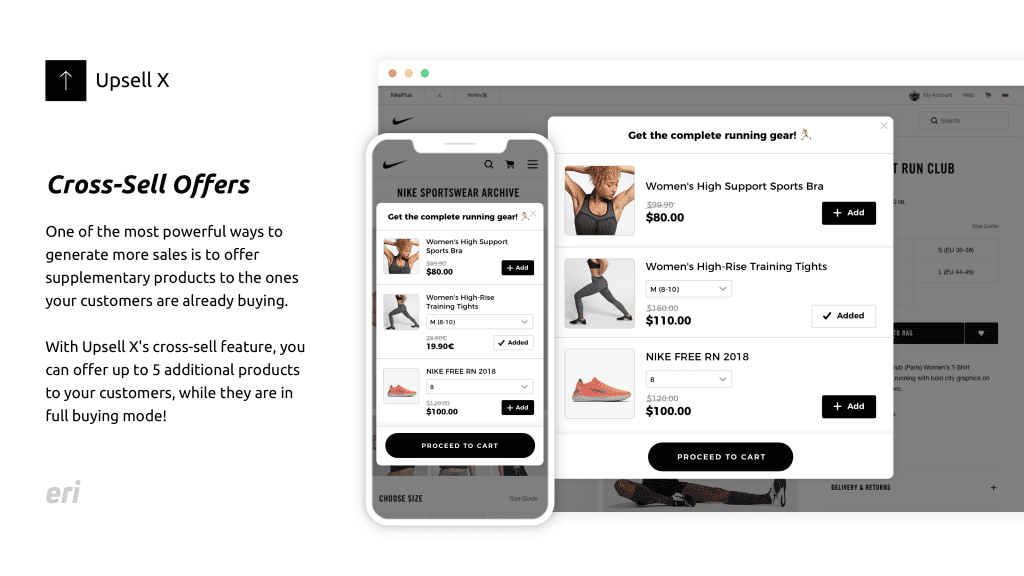
Quite commendable, to say the least. But, it introduces a unique problem. What is offered first, and what comes last?
Fortunately, the development team has thought this through. Because the app now allows users to dictate individual item priority. Consequently, it knows precisely what you’re most eager to showcase to your customers.
All things considered, Upsell X’s strongest point is its discount provision. It substantially boosts the chances of closing an upsell through its customizable discount offers. You can pretty much tweak them in line with your preferences.
If you’re running a startup, you’ll also be pleased by the fact that all these functionalities come completely free. But there’s a catch. This only applies to stores with not more than 10 upsell purchases per month.
They have a 4-tier pricing plan based on specific view volume tiers, which I’m not a huge fan of (rather it be ordered items / success oriented or flat), but it’s also not super expensive to begin with.

7. Personalizer
Developed by Limespot, Personalizer is another exceedingly popular upselling tool, going by its 1000+ reviews.
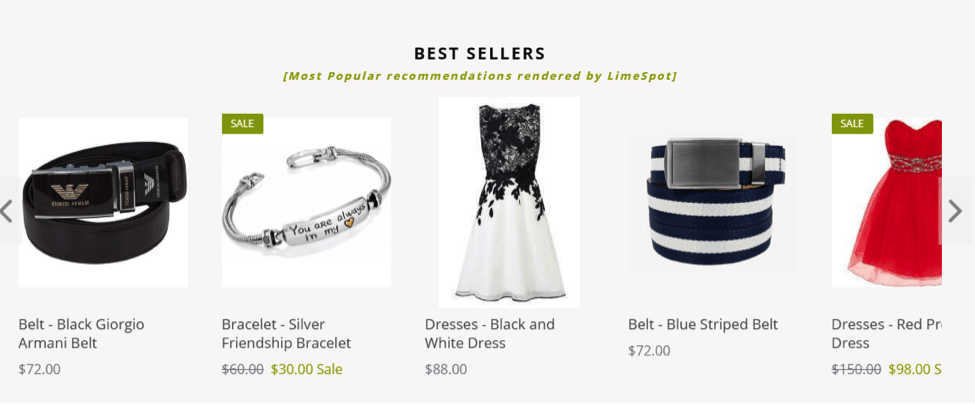
It’s heavily reliant on its patented artificial intelligence engine, which basically shows the right item to the right customer at the right time.
After a comprehensive analysis of customer behavior and preferences, this app rolls in with numerous personalized item recommendations on every page.
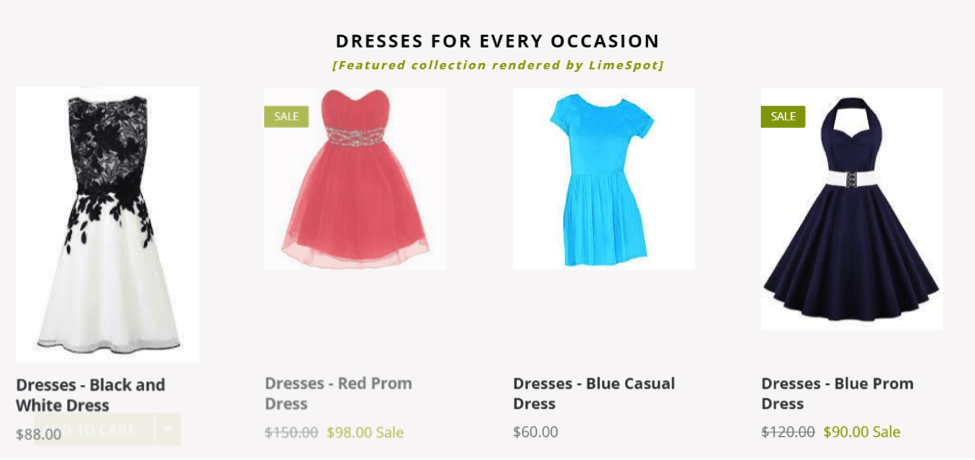
And that’s not all. For optimal results, the products are placed in multiple categories. Probably to trigger a shopper’s every possible instinct.
The categories include:
- Recently Viewed
- Featured Collections
- Trending Products
- New Arrivals
- Frequently Bought Together
- You May Like
- Related Products
- Most Popular Products
Now, that’s a long list to keep up with. But fortunately, the app recently introduced a formidable product analytics system.
You can now track product performance by interaction sources, rank products by popularity and trends, view lists of products according to action frequencies, plus sort lists of items by interaction source.
That’s in addition to its real-time reporting dashboard, which displays sales, average order size, product view per visitor, and revenue per visitor.
Want a test drive? Well, you can have a feel of these features for free thanks to the app’s 15-day trial offer.
Beyond that, the pricing plans get a little complicated based and a little deceptive if you don’t read the fine print. The starting price is fine AND there is a freemium model, but then there’s revenue based pricing:

These pricing options also aren’t clearly explained at this link until you get to the footer:

This may make sense for your business, but I wasn’t a fine of having to dig for the information.
Recapping My Thoughts
Now, let’s recap with the main points to remember.
Firstly, recent studies by reputable analysts place the average cart abandonment rate between 60% and 80%. Barilliance, for instance, established 77.24% in 2016, which subsequently increased slightly to 78.65% in 2017.
These numbers we’ve seen over the entire lead journey cumulatively add up to the mother of all astonishing facts. That the average global conversion-to-sale rate in the recent past has been oscillating between 2.48% and 3.1%.
Well, it turns out that a customer has a 27% chance of coming back to buy after the initial purchase. And in case the actually do, the stakes follow suit and move up higher. They now have a 45% chance of returning for a third purchase.
And guess what? It doesn’t end there. By the time they make that third purchase, stakes will shift to 54%. And so forth.
The bottom line is that as long as you maintain good customer service, you’re bound to make more from the bird in hand. As opposed to the two in the bush.
And one of the strategies has always been upselling.
Technically, upselling is the concept of offering to sell a secondary product to a customer who’s already in the process of purchasing a primary product.
The best Shopify apps for this (in no specific order) are:
- Bold Upsell: Best Overall
- Monster Upsells: Best Slide In Cards
- Voyager Upsell & Cross-Sells: Best Upsells + Cross Sells
- Candy Rack: Best Simple & Affordable
- Shop The Look
- Upsell X
- Personalizer
That said, I wish I could make things much simpler by naming an outright winner. But these apps are different and quite unique in their own ways. So my verdict would only be subjective.
Where does that leave you? Well, to determine the ideal app for your store, I’d advise you to go ahead and take advantage of these apps’ free-trial offers. Assess them individually according to your store’s needs, paying special attention to the precise sales results generated by the respective apps.
And remember, while you’re at it, we’d love to hear about your experience. So, feel free to share your thoughts in the comments section.
Otherwise, happy upselling!
Further Reading on Shopify Apps & Platforms
Here are some other specific ecosystem guides for the Shopify app marketplace:
- Top Shopify Shipping Apps
- Top Shopify Payment Gateways
- My Go-To Shopify Affiliate Apps
- My Favorite Shopify Accounting Software
- Go-to Shopify CRMs
- Top Shopify Page Builder Apps
- Guide to Shopify Loyalty Apps
- Top Shopify Apps for Collecting Sales Tax
- Shopify Email Marketing Software [Guide]
- Ranking Shopify Wholesale Apps
- Best Shopify Returns Apps
- Top Print on Demands Apps for Shopify
- My Best Shopify Apps to Boost Slumping Sales
- Top Shopify Review Apps
- Examining Shopify Pre Selling App Options
- Top Shopify Inventory Management Systems

